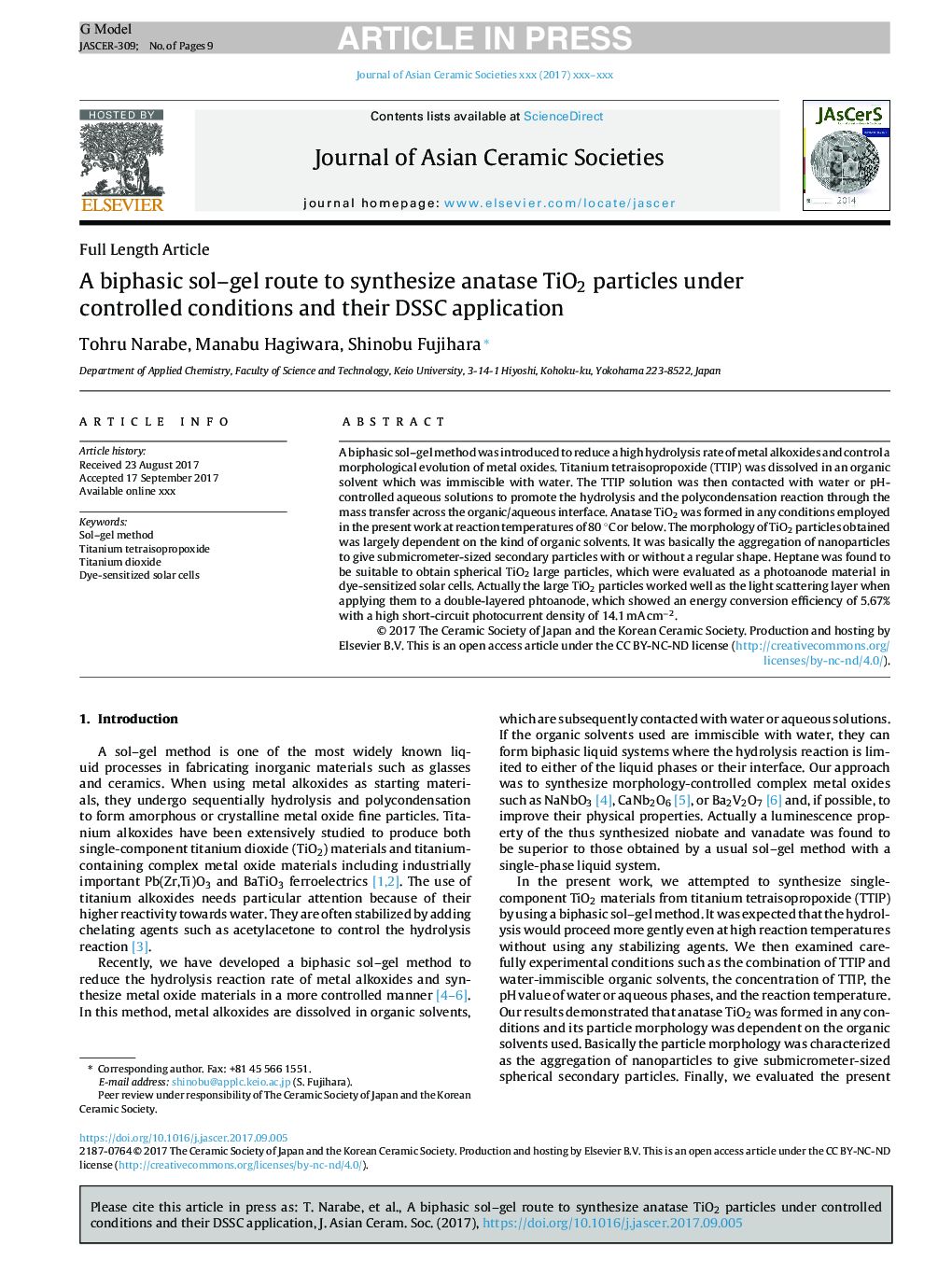| Article ID | Journal | Published Year | Pages | File Type |
|---|---|---|---|---|
| 7897544 | Journal of Asian Ceramic Societies | 2017 | 9 Pages |
Abstract
A biphasic sol-gel method was introduced to reduce a high hydrolysis rate of metal alkoxides and control a morphological evolution of metal oxides. Titanium tetraisopropoxide (TTIP) was dissolved in an organic solvent which was immiscible with water. The TTIP solution was then contacted with water or pH-controlled aqueous solutions to promote the hydrolysis and the polycondensation reaction through the mass transfer across the organic/aqueous interface. Anatase TiO2 was formed in any conditions employed in the present work at reaction temperatures of 80 °C or below. The morphology of TiO2 particles obtained was largely dependent on the kind of organic solvents. It was basically the aggregation of nanoparticles to give submicrometer-sized secondary particles with or without a regular shape. Heptane was found to be suitable to obtain spherical TiO2 large particles, which were evaluated as a photoanode material in dye-sensitized solar cells. Actually the large TiO2 particles worked well as the light scattering layer when applying them to a double-layered phtoanode, which showed an energy conversion efficiency of 5.67% with a high short-circuit photocurrent density of 14.1 mA cmâ2.
Related Topics
Physical Sciences and Engineering
Materials Science
Ceramics and Composites
Authors
Tohru Narabe, Manabu Hagiwara, Shinobu Fujihara,
